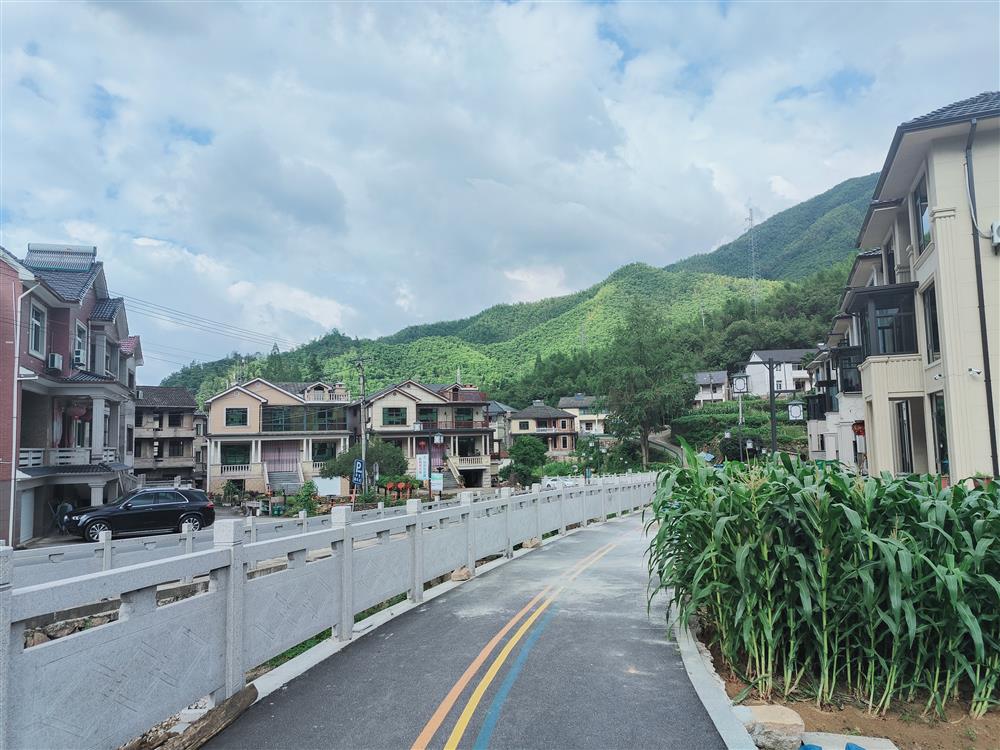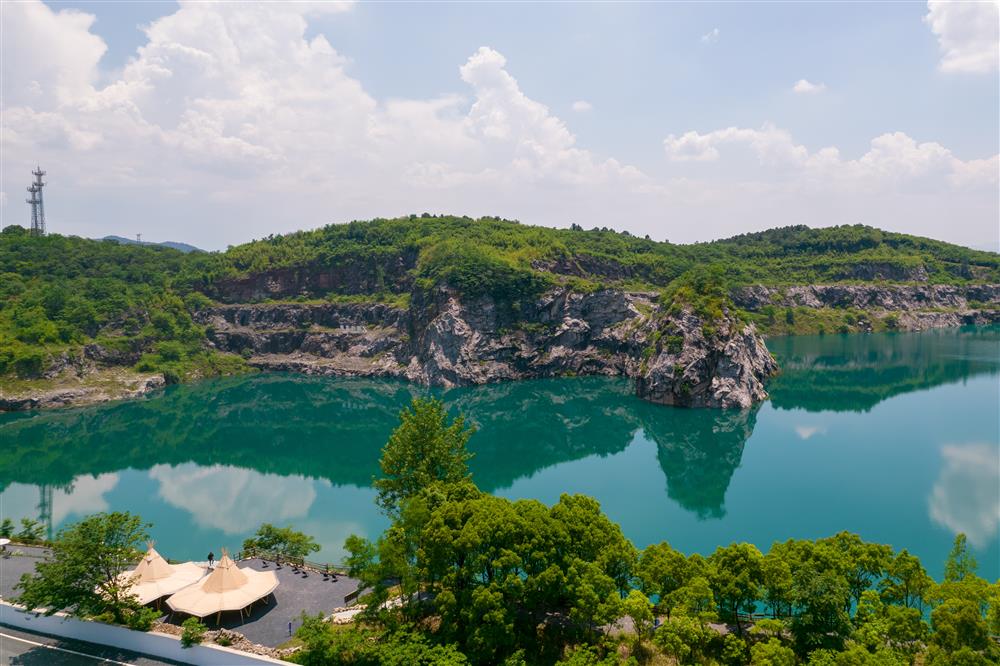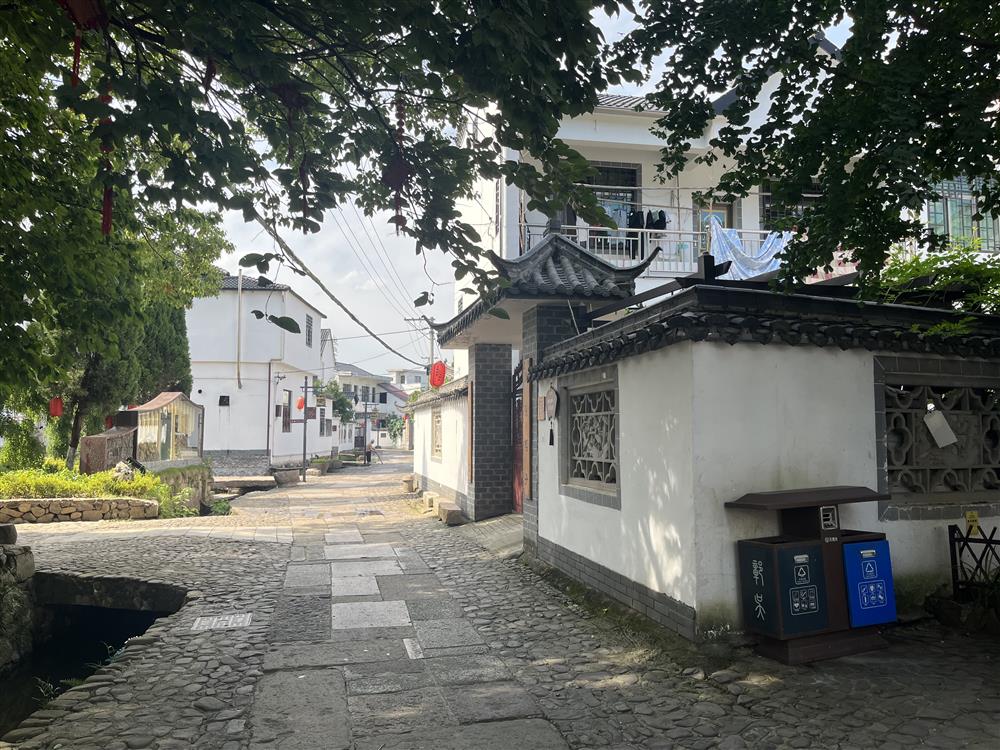These three words are being talked about in the Yangtze River Delta financial circle. Recently
Recently, Shanghai has held two meetings in the financial field of the Yangtze River Delta. One was the first symposium on financial regulation to support the integrated high-quality development of the Yangtze River Delta, and the other was the second joint meeting of the Yangtze River Delta Regional Banking Association with the theme of "Doing a great job in green finance and cultivating the development of new productive forces". Meeting. Looking closely at the key words of these two conferences, we can find that "integration", "high quality" and "green" run through them.
These keywords are actually a microcosm of the financial integration of the Yangtze River Delta in recent years. Regulatory authorities and financial institutions in this area have always been planning to promote "integrated" development with the idea of a "game of chess".
Focusing on infrastructure construction, the financial sector continues to promote the "integration" of mechanisms; focusing on information asymmetry, regulatory authorities help achieve data "integration"; focusing on policy empowerment, financial institutions actively create service "integration"
"Yangtze River Delta Financial Services Free Shipping Zone" is a term that Shanghai Banking Group talks about. Since express delivery can be circulated with free shipping, economic bloodlines such as finance should be unimpeded in the Yangtze River Delta.
Focusing on infrastructure construction, the financial sector continues to promote the "integration" of mechanisms. In recent years, many commercial banks have established professional promotion functional departments, with the head office taking the lead in deploying and coordinating the high-quality development of the integrated development of the Yangtze River Delta. For example, Bank of Communications, Shanghai Pudong Development Bank, and Shanghai Rural Commercial Bank have all established Yangtze River Delta integrated management headquarters. Five major banks, including Industrial and Commercial Bank of China, Agricultural Bank of China, Bank of China, China Construction Bank, and Bank of Communications, have all established branches or sub-branches in the Yangtze River Delta Integrated Demonstration Zone. .
The issue of regulatory consistency within the region is also the key to smooth blood circulation. At the symposium on financial supervision to support the high-quality development of the integration of the Yangtze River Delta, the five regulatory bureaus of the State Administration of Financial Supervision, Shanghai, Jiangsu, Zhejiang, Anhui, and Ningbo, jointly signed the "Memorandum of Cooperation on Financial Supervision to Support the High-Quality Development of the Integration of the Yangtze River Delta." Clearly establish a working mechanism for financial supervision to support the integrated high-quality development of the Yangtze River Delta, and strengthen financial supervision coordination in the Yangtze River Delta, promote financial reform and innovation in the Yangtze River Delta, promote financial information sharing in the Yangtze River Delta, strengthen party building exchanges and cooperation, and cultivate regulatory talents. We will continue to make efforts in key areas of high-quality development of triangular integration, vigorously promote banking and insurance institutions to continuously optimize the supply of financial products and services, and build the Yangtze River Delta region into an important window for the reform and opening up of the financial industry.
Focusing on information asymmetry, regulatory authorities help achieve data “integration”. The Yangtze River Delta Credit Information Chain Platform created by the People's Bank of China has so far helped many small, medium and micro enterprises in the Yangtze River Delta obtain loans. Financing for small, medium and micro enterprises is difficult and expensive. This is often due to the lack of data support. Banks cannot form a complete corporate portrait through existing data. The Yangtze River Delta Credit Information Chain Platform uses blockchain technology to promote interconnection among provinces and cities in the Yangtze River Delta in the field of credit information, greatly alleviating the problem of information asymmetry in financial services.
China Merchants Bank Shanghai Branch obtains financial statements, past financing information, mortgage and seizure information, litigation-related information, and non-credit public information of enterprises through the Yangtze River Delta Credit Information Chain Platform, which is used in the key credit granting links of business, which not only solves the problem of banks The problem of information asymmetry between enterprises has also significantly improved the convenience of corporate credit business involving cross-regional credit reporting. In recent years, on-chain information resources have been continuously enriched, making it easier for bank account managers to query corporate information and more confident in conducting business. The bank's monthly inquiries through the Yangtze River Delta Credit Information Chain platform have increased from more than 200 in the early days of accessing the platform to more than 700 today. As of the end of May this year, the average monthly number of successful inquiries has increased by 40% year-on-year. Among them, small, medium and micro enterprises account for more than 90% of the enterprises that lend money through the Yangtze River Delta Credit Information Chain platform.
Focusing on policy empowerment, financial institutions actively create service "integration". Take Shanghai’s popular free trade accounts, cross-border two-way RMB capital pool and other free trade zone exclusive policies as examples. In order to allow more customers in the Yangtze River Delta region to enjoy the policy dividends in the free trade financial field, Shanghai Pudong Development Bank Taking the financial facilitation policy of the free trade zone as the core, we built a bank-wide free trade linkage platform and actively carried out free trade business linkage in the Yangtze River Delta region.
In the process of linkage, Shanghai Pudong Development Bank strengthens the channel connection between branches in the Yangtze River Delta, establishes a regular linkage communication mechanism between branches in the Yangtze River Delta, regularly communicates the cross-border business needs of enterprises, fully reflects the effect of resource and policy sharing, and organizes bank-enterprise docking activities to conduct free trade Promote and promote innovative products and improve services. So far, branches in Ningbo, Suzhou, Nanjing, Hangzhou and other places have introduced the free trade linkage platform to enterprises and successfully implemented a number of businesses.
Sticking closely to "high quality", financial institutions actively design products to introduce funds; stick closely to "high quality", introduce infrastructure renewal services; stick closely to "high quality", state-owned enterprises and state-owned enterprises focus on introducing resources
As of now, there are more than 270 companies listed on the Science and Technology Innovation Board in the Yangtze River Delta region, accounting for half of the country. Behind this is the inevitable result of the high-quality economic development of the Yangtze River Delta and the continuous assistance of financial services.
With "high quality" in mind, financial institutions actively design products to introduce funds. Recently, China Construction Bank, Shanghai Stock Exchange and China Securities Index Co., Ltd. jointly compiled the China Construction Bank Technology Innovation Leading Index. Based on the CCB Science and Technology Innovation Evaluation Index System, 50 listed companies in the Yangtze River Delta region were selected with strong technological innovation capabilities and The securities of listed companies with good growth potential are used as index samples to reflect the overall performance of listed companies with science and technology innovation themes in the Yangtze River Delta region. Such an index gives full play to the factor allocation function of the capital market, will guide more social funds to gather high-quality technology listed companies, and support the integration of scientific and technological innovation and the development of new quality productivity in the Yangtze River Delta.
Closely following "high quality", infrastructure renewal services introduce running water. After more than five years of development, the Yangtze River Delta Capital Market Service Base, initiated and established by the Shanghai Pudong New Area Government and the Shanghai Stock Exchange, has continued to expand its "circle of friends". At present, 35 cities at or above the prefecture level in the Yangtze River Delta region have become base alliance cities, and 19 base sub-centers have been established. The base also gathers 153 equity investment institutions, securities institutions, financial institutions, etc., and has initially formed a financial service system suitable for the entire life cycle of scientific and technological innovation enterprises. The service content of the Yangtze River Delta Capital Market Service Base is also constantly being updated. In the context of industrial chain mergers and cross-border mergers and acquisitions becoming important means for the transformation and upgrading of listed companies, the base cooperates with venture capital institutions and financial institutions to actively help listed companies find suitable upstream and downstream targets, and supports listed companies and chain owners to accelerate their growth through mergers, acquisitions and reorganizations. ,Bigger and stronger.
Sticking closely to "high quality", state-owned enterprises and state-owned enterprises focus on introducing resources. Through its platform Guofang Innovation, Shanghai International Group has joined hands with state-owned enterprises, financial institutions and social capital in three provinces and one city in the Yangtze River Delta to initiate and establish the Yangtze River Delta Synergy Advantage Industry Fund and the Yangtze River Delta Synergy Leading Industry Fund, and build the Yangtze River Delta science and technology industry Fund series clusters, with a total scale of 17 billion yuan.
The fund actively attracts development increments in the Yangtze River Delta region and strives to enhance its leading role in scientific and technological innovation. In the field of artificial intelligence, Yangtze River Delta Fund led the investment in Suiyuan Technology, a leading domestic AI computing power chip manufacturer, and jointly led an investment of 630 million yuan, bringing the total financing amount of this round to more than 2 billion yuan; in the field of biomedicine, Yangtze River Delta Fund has laid out Liangwei Biology, one of the few domestic synthetic biology companies that has achieved a closed loop of R&D-large-scale production-commercialization, has pushed it to take root in the Yangtze River Delta, establishing a subsidiary and a new R&D center in Pudong, Shanghai; in the field of integrated circuits, Changwei Biotech has Triangle Fund invested in the Qihang Chuangxin Fund project, further deepening the cooperative relationship with China's largest DRAM manufacturer Changxin Memory, and helping the integrated circuit industry in the Yangtze River Delta region to "strengthen the chain", "replenish the chain" and "solidify the chain"...
It is worth mentioning that the Yangtze River Delta Fund has also innovatively developed an investment model that combines industry depth and market breadth. That is, with the Yangtze River Delta Fund as the cornerstone sponsor, it has joined forces with leading enterprises in the industry chain to jointly establish long-term investment models such as Huahong Hongxin Fund. The Triangle Industrial Chain Direct Investment Fund accelerates the cultivation of world-class high-end industrial clusters.
Financial institutions in the Yangtze River Delta are frequently making efforts around "green" to promote energy conservation, carbon reduction and efficiency improvement in key areas and industries in the Yangtze River Delta, and to strengthen and optimize green and low-carbon industries.
The word "green" in the Yangtze River Delta Ecological Green Integrated Development Demonstration Zone is a theme that finance must delve into.
Improving the green financial market system, innovating green financial products and services, and improving the supply of green financial services... Financial institutions in the Yangtze River Delta are frequently making efforts around "green" to promote energy conservation, carbon reduction, and efficiency improvement in key areas and industries in the Yangtze River Delta, making them stronger and stronger. Excellent green and low-carbon industry.
At the second meeting of the Yangtze River Delta Regional Banking Association Joint Meeting, the latest "Yangtze River Delta Banking Green Finance Sustainable Development Report" showed that the Yangtze River Delta region has successively introduced local green finance standards, action implementation plans, and key supports. Catalog and other supporting policies to enrich the policy practice of sustainable development of green finance.
In the Yangtze River Delta region, 93% of banks have formulated green finance strategic plans, 82% have set up special green finance committees or departments, and 85% have formulated supervision, inspection and reward and punishment mechanisms to ensure the quality of green finance development; in terms of green finance products and services , 94% of banks have launched green credit business, 85% and 64% of banks have participated in green inclusive finance and green technology finance business respectively, and 20% and 10% of banks have begun to explore green bonds and carbon finance business respectively. , financial businesses in the fields of climate investment and financing and biodiversity protection have also achieved "zero breakthroughs."
Among them, the Shanghai banking industry has played a leading role. The latest data from the Shanghai Supervision Bureau of the State Administration of Financial Supervision and Administration shows that as of the end of the first quarter of this year, the green financing balance of the banking industry in Shanghai totaled 1.566615 billion yuan, an increase of 9.58% from the beginning of the year. Specifically, the balance of green credit was 1,519.196 billion yuan, an increase of 10.04% from the beginning of the year; the balance of green bond investments by non-financial enterprises was 17.841 billion yuan, an increase of 9.15% from the beginning of the year.
At the same time, the sustainable development of green finance also faces a series of challenges, including inconsistent green finance standards, inconsistent green finance regulatory policy standards, barriers to cross-regional operations of financial institutions, and insufficient support from green finance policies.
But challenges are also opportunities. Looking to the future, the Yangtze River Delta clearly has great potential in green financial standards, green M&A financing, green credit asset securitization, carbon emission rights pledge financing, etc. This hot spot will surely lead the development of green finance in the country and even the world. trend.



![[Yangtze River Delta Daily] Ningbo plans to further utilize Ningbo | Hub | Yangtze River Delta](https://a5qu.com/upload/images/27b30ada2a9dd3b926141587c72f96f6.jpg)

